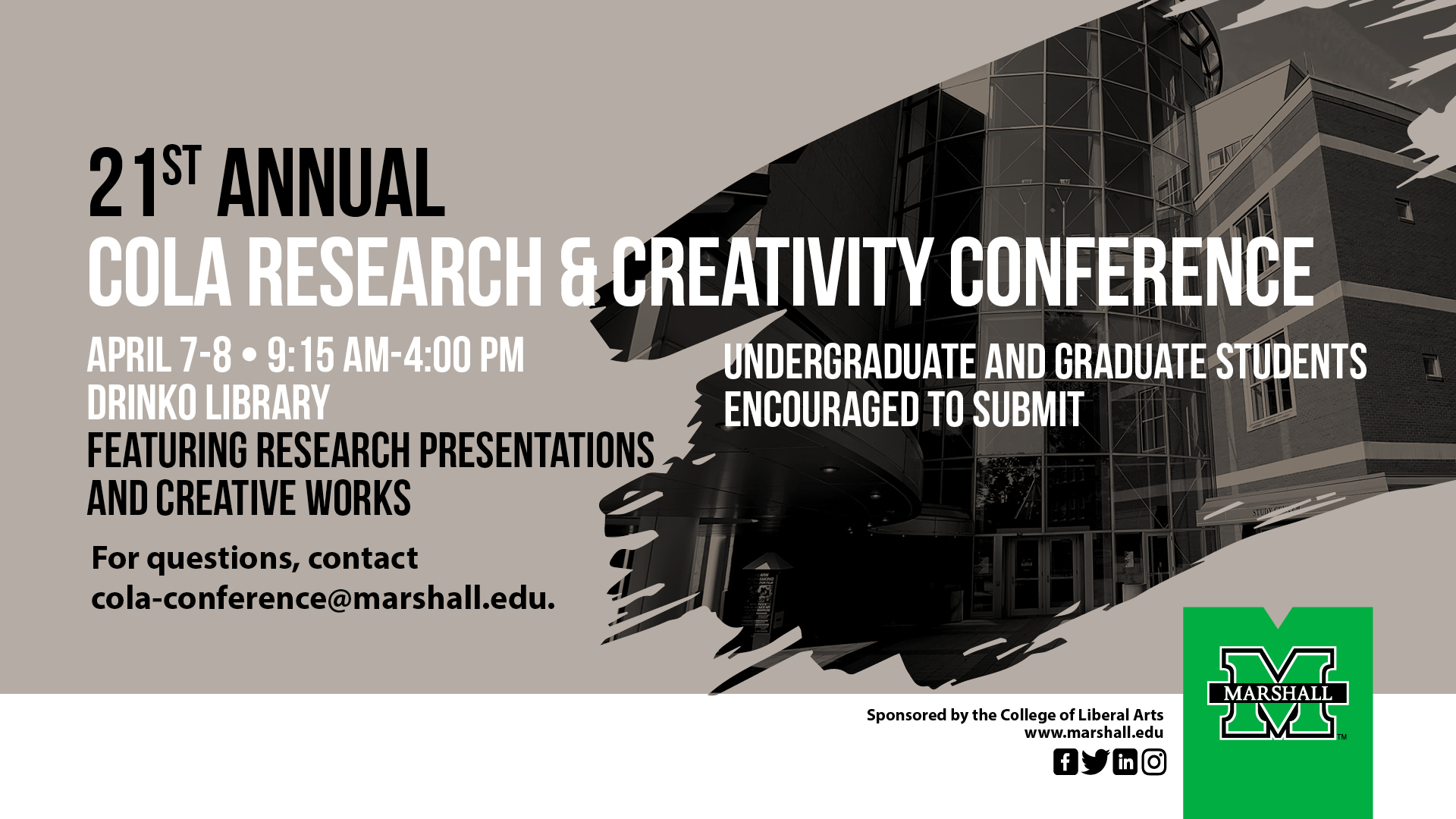Ready to Return: A Revised Approach to Shakespeare in the Classroom
Document Type
Panel Presentation
Keywords
Literacy, Shakespeare, media
Biography
My name is Hannah Thompson and I am a senior English Educations student at Marshall. I graduated from a school just outside of Columbus and still coach Color Guard there. In my time of working with high school students, I have developed a strong passion for teaching things that students care about and will use in the future and outside of the classroom. I hope to pursue a job in secondary ELA this fall.
Major
English Education
Advisor for this project
Robert Ellison
Abstract
In today’s world, both children and adults are constantly surrounded and influenced by visual media. How great would it be if educators could use texts that are often considered dated and irrelevant by students to teach them forms of critical visual literacy that would enable them to make informed decisions about the media that they encounter every day? Critical visual literacy refers to an analysis that seeks to uncover the effects of social and political power dynamics through visual manipulation, distribution, and misinformation in visual media such as advertisements, propaganda, political campaigns, etc. The misconception and stigma surrounding visual literature in the classroom as “dumbed-down” or juvenile has inhibited students from becoming proficient in multiple literacies beyond the textual.
William Shakespeare did not write novels or short stories–he was an author of drama. How different would Shakespeare instruction look if educators honored the original intent of Shakespeare’s work and brought the plays to life? Works of Shakespeare, originally intended to be a visual form of media, is a perfect vehicle for teaching our students real-world visual critical literacy skills. In addition, I will discuss a twenty-day long unit plan utilizing Romeo and Juliet as a tool to prepare students to evaluate the visual media that surround and influence their perceptions of the world.
Ready to Return: A Revised Approach to Shakespeare in the Classroom
In today’s world, both children and adults are constantly surrounded and influenced by visual media. How great would it be if educators could use texts that are often considered dated and irrelevant by students to teach them forms of critical visual literacy that would enable them to make informed decisions about the media that they encounter every day? Critical visual literacy refers to an analysis that seeks to uncover the effects of social and political power dynamics through visual manipulation, distribution, and misinformation in visual media such as advertisements, propaganda, political campaigns, etc. The misconception and stigma surrounding visual literature in the classroom as “dumbed-down” or juvenile has inhibited students from becoming proficient in multiple literacies beyond the textual.
William Shakespeare did not write novels or short stories–he was an author of drama. How different would Shakespeare instruction look if educators honored the original intent of Shakespeare’s work and brought the plays to life? Works of Shakespeare, originally intended to be a visual form of media, is a perfect vehicle for teaching our students real-world visual critical literacy skills. In addition, I will discuss a twenty-day long unit plan utilizing Romeo and Juliet as a tool to prepare students to evaluate the visual media that surround and influence their perceptions of the world.



